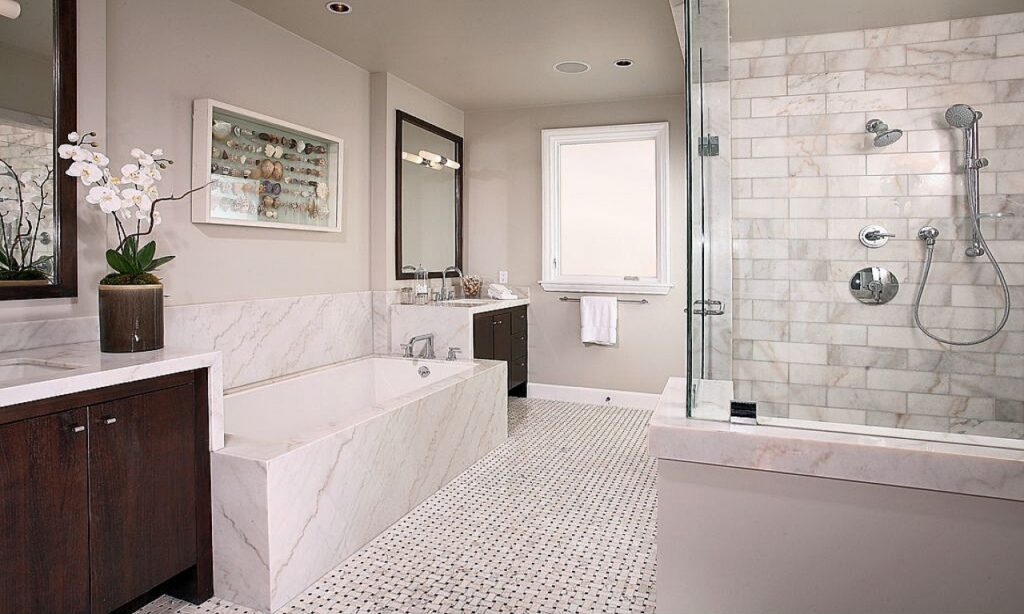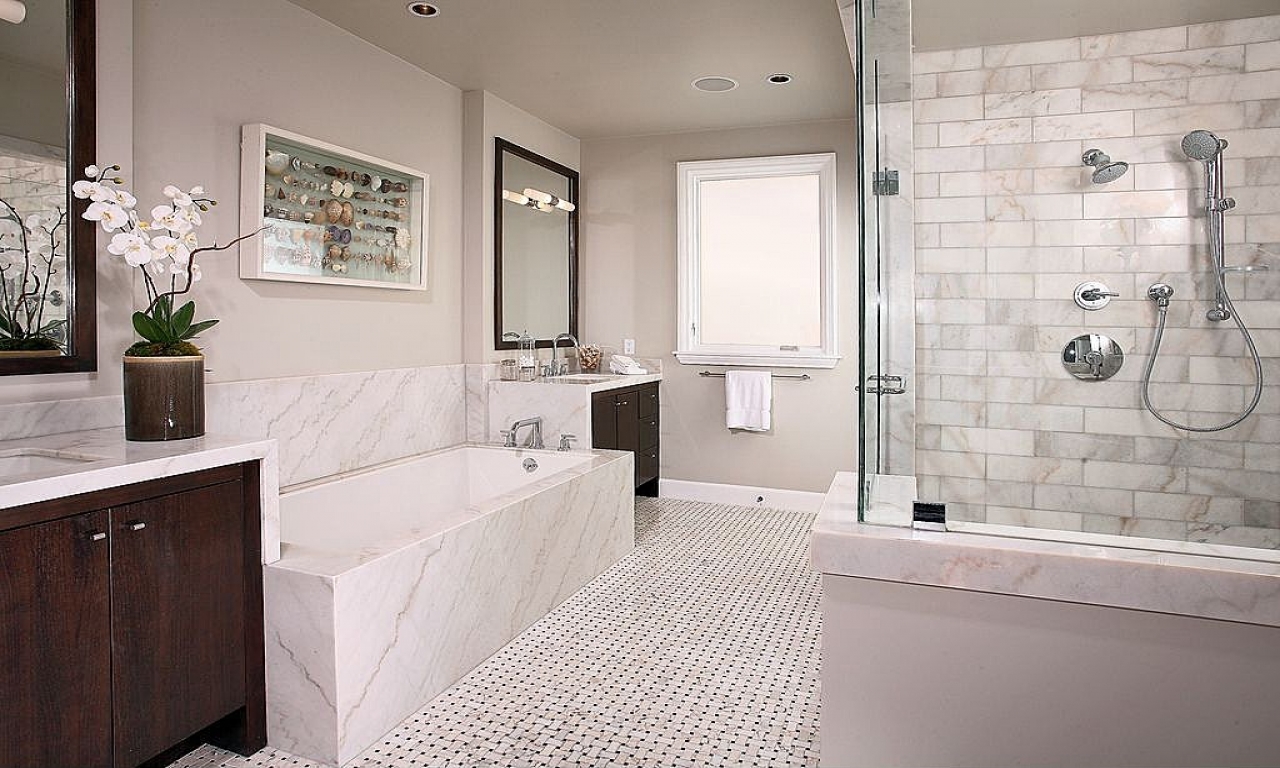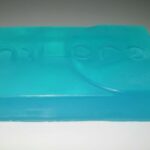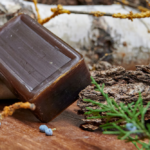In this article, the travertine laying explained step by step.
- Organize the laying of travertine and equipment
- Laying the travertine

In this article, you will find all the information you need for laying open-pored (not filled) interior travertine tiles. Your installation will be a great success, and you will be proud of the result.
Interior travertine tiles are trendy because they give the rooms a rustic character while exuding a unique warmth. The laying of this stone to a few particulars is why we devote an article to it so that you are as well informed as possible. The characteristics of travertine are mainly its pores, they are a natural property of travertine and are often present both at the front and at the back of the stone. This is why when laying travertine indoors, you should pay attention that there is no gap between the back of the stone and the glue. To do this, simply apply the adhesive mortar to the floor and also to the back of the stone.
Organize the laying of travertine and equipment
Measure your surface carefully and take into account that there will be losses when cutting, so it is best to order 10% more than the desired surface. Choose the most appropriate format for you and order your travertine tile.
Once you have received the delivery, observe if your travertine tiles have a scheme of colour. Within the same shipment, travertine can have variations in colour, some lighter and some darker. To do this, lay the various tiles on the floor for a test installation. To achieve a homogeneous floor and an attractive overview, we recommend mixing the travertine tiles from several pallets or packages received on delivery.
The scheme of colour will be fascinating if you alternate dark and light tiles. If there are many colour and gloss variances in the batch of your delivery, you can use a specific batch or colour. Also, the least beautiful textures can be placed in the corners or towards the edges of the room.
To carry out the installation of your natural stone floor, we have prepared a list of the necessary materials. Keep in mind that the laying material must be suitable for the travertine on the tumbled surface. This is why it is more appropriate to order this material from a specialized trader, at the same time as ordering the travertine tiles, to choose the right products corresponding to the travertine immediately.
1. First of all, a primer must be applied, which is essential for the adhesion between the adhesive and the concrete screed as well as for regulating the absorption of the floor.
2. Which adhesive mortar should I choose? To lay travertine tiles, we recommend laying in a thin bed: Up to 10 mm of a mortar adhesive suitable for natural stone is then applied. Particular case: if your tiles have dimensional tolerances of more than +/- 1.5 mm, install on a medium bed of adhesive mortar. Excellent adhesion to the floor is essential for open pore tiles, as air inclusions are more likely to occur. That is why we recommend laying with the double glueing method. This method consists of putting glue on the floor as well as on the back of the tile. In this way, two “wet” glue surfaces are brought into contact.
3. For real protection of your travertine floors, plan to make a waterproofing. This is applied to travertine tiles before grouting. (Caution: waterproof only clean floor). Waterproofing your natural stone floor protects the travertine from dirt over a long time.
4. Choosing the right joint mortar is very important. Please select the correct colour of the mortar joint and the right quantities. For example, for travertine like Light travertine, we recommend choosing a light beige joint mortar while for Rustic or Noce travertine, it will be better to turn to a darker beige. Here, you need to use a particular process, because the joint mortar will be spread over the entire natural stone floor, to fill the spaces left for the joints but also to fill the pores of the travertine. That is why you will need more joint mortar.
5. The special silicone for natural stone must be the same colour as the joint mortar as it will fill the expansion joints. It is again a question of harmony.
6. After joining your slate tiles, remove the residue from the joint mortar with a cleaner suitable for natural stone. The manufacturer regularly notes in the product description whether or not the product is suitable for natural stone. We recommend a multi-cleaner, which will allow you to carry out optimal maintenance of your floor.
Of course, make sure you have the right tools for the installation.
This includes adhesive insulation strips, a trowel, a 10 mm toothed trowel, a rubber mallet, a mason’s ruler with different levels and water saw or grinder with a Flex diamond disc.
Don’t forget to plan and order your plinths of the same stone in addition to the tiles.
Laying the travertine
After preparing the material and the tiles, the laying can begin. These are the most critical steps for laying process.
1. Prepare a sketch to best visualize and predict the positioning of the tiles during installation. This is very useful, especially for the pattern in Roman opus which is often used for travertine.
2. Adhesive insulation strips must be glued along the walls. They prevent the presence of glue on the wall and to avoid noise pollution.
3. When the concrete screed is clean, you can apply the primer with a paper brush or a paint roller. Respect the drying time according to the manufacturer’s instructions.
4. The adhesive mortar is applied uniformly over the entire surface with a toothed trowel. The way it is applied with different movements is then essential. To spread the glue, use a 10 mm toothed trowel. The flatness of the basement is decisive. The smoother your screed, the thinner the glue layer. Lay the travertine using the double gluing method, i.e. the glue is applied to both the floor and the back of the tiles.
5. Distribute 10 mm of glue on the surface, then lay the tiles. Once veneered, the 10 mm adhesive mortar bed is pressed to reach 5 mm. To maintain spacing and achieve straight joints, use braces. These will spread the tiles at an equal distance. Using a spirit level, check the planarity of the surface. The width of a joint is generally around 5 mm (with a supposed dimensional tolerance of the tiles of the order of + -1 mm in width and length). Be careful: for tumbled travertine, the joints appear wider. After glueing, it takes a drying time before you can walk on the floor.
6. The plinths must be glued with an expansion joint between the wall and the floor.
7. After the drying time has elapsed, you can remove the tile-crosses. This drying time is usually 2-3 hours.
8. Before starting to waterproof, the floor must be cleaned. If the surface is not clean, dirt will be waterproofed along with the stone, hence the need to clean the travertine tiles before waterproofing. Waterproofing is applied as a thin layer on the surface to prevent dirt from penetrating the stone.
9. The entire surface is jointed with a small scraper (the natural joints and pores of travertine). During this step, the mortar to grout the surface may overflow and it ends up on the surface of the stone, so use a sponge to clean the stone diagonally. Important: The travertine floor has a rustic effect. To preserve this style, the cavities must be visible. This means that the pores of the stone should not be filled entirely. They will then look very natural.
10. After drying, the travertine can be cleaned with a multi-cleaner to remove joint mortar residues and dirt resulting from installation.
11. Apply silicone to the plinths and install the expansion joints.
12. Finally, before you can walk normally on your travertine tiles, the floor can once again be cleaned with the multi-cleaner.
The instructions given here are for porous and rectangular travertine tiles. If your travertine is to be laid in Roman opus, this is another method of laying.
All specialist advice given in this article is for guidance only, it is best to refer to a professional tiler.
If you want to see more useful information about different categories, please visit our website.











